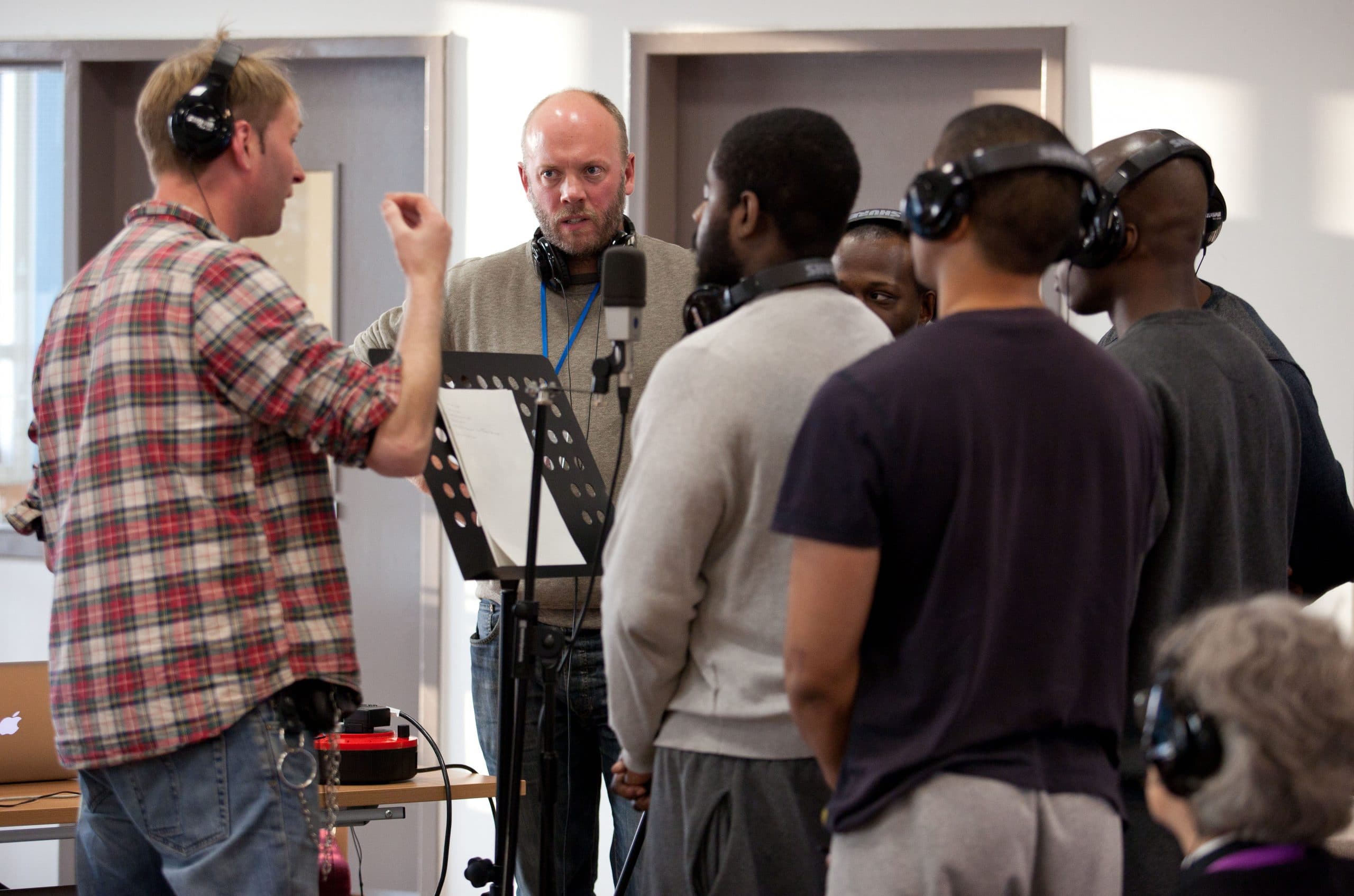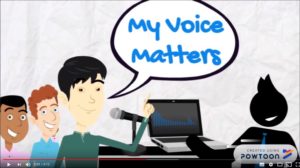This is a guest post by Clare Annamalai, Business Director of Finding Rhythms about the work they do with prisoners. You can keep up with their latest news on Twitter @findingrhythms. Do try and find a little longer than usual to read this post and then you can have the sheer joy of clicking on the links to a range of beautiful, original music created by prisoners.
Finding rhythms
When you move in the overlapping and overwhelmingly liberal bubbles of arts and penal reform, it is easy to forget how absurd the work of Finding Rhythms can sound to people outside those bubbles. “Well…..” we reply innocently, to the question “what does your charity do?” “Well, we take professional musicians into prisons for rehabilitation and training.” There follows a pause, and then a polite “Oh right”, which actually means “WHY?” Why do prisoners need (or deserve) a fun activity? Why teach them music instead of plumbing or joinery? Why would professional musicians know anything about prisoner rehabilitation? So many unspoken questions, and at times like this it would be great to have François Matarasso on hand, to explain how music “creates and shares meaning,…helps us understand honestly who we are and who we have been… establishes bonds of solidarity and…helps us understand, however incompletely, what it is to be someone else, to have experiences we will, can, never have.”1 Or to have Susan Hallam pop up and discuss the correlation, in children, between music-making and beneficial outcomes including self-regulation, creativity, engagement with education, social cohesion, empathy, personal development and self-beliefs.2 But thus far we’ve always had to do the explaining ourselves, and actually, we have a pretty good story to tell, with experiences that entirely support the conclusions of Matarasso and Hallam.
Co-production
Finding Rhythms started out formally as a charity in 2013, though co-founder Robin Harris had been running music projects in prisons for much longer. We started from the strong conviction that everybody deserves a second chance in life, and the equally strong conviction that music is a uniquely engaging medium. But from there we made a series of choices to arrive at our current operating model:
- Groupwork rather than tuition. Many prisoners have poor experiences of formal education and the hierarchical teacher – student relationship. We wanted to create a forum where participants could collaborate, learn by doing, coach each other and work towards a shared goal. We wanted to foster a producer – artist relationship between ourselves and participants, in which there may be better and worse outcomes, but there are no right and wrong answers.
- Recording music rather than simply making music. There is a reason that our logo is a microphone: the microphone symbolises commitment. Every one of our projects in prison results in an album of new music written, composed and recorded by prisoners. This is a tangible, enduring outcome, and it forces participants to raise their game.
- New songs, no covers! We’re looking for authenticity and to unearth latent creativity. Within the environment of prison, where bravado and façades are the normal order of the day, here participants have to be vulnerable, to share feelings, experiences and, indeed, their own musical influences (not always easy, if you’re the lone folk music fan in a room full of rappers!)
In 2014 we started to offer a BTEC in Supporting Employability and Personal Effectiveness. This was not a bolt-on to our music-making activity, but something which arose naturally from it, because the skills required to make an album of music in just 36 hours are invaluable transferable skills for employment and strong relationships. Throughout the project participants must demonstrate that they have listened and communicated effectively, made a positive contribution within the team, given and taken constructive feedback, managed tasks and, importantly, reflected on their own development. You could say that we lure them in with the appeal of music, and then deliver learning by stealth.

A three-sided process
Of course, there are at least three sides to the process of creating art. There’s the excitement and challenge of making it in the first place, then there’s the pleasure of listening to or looking at it, and somewhere in between there is the danger and delight of sharing it. Earlier this year, with the help of staff at HMYOIs Feltham, Isis and Swinfen Hall we held our first graduation gatherings. Course participants, prison staff, friends and supporters came together to hear the album for the first time, while CDs and certificates were presented in front of an audience. Public recognition of achievement is an important part of helping prisoners to see and show themselves in a better light, and is of course what makes the Koestler Awards so very powerful. But sharing can also happen remotely, and participants often use their songs to talk to loved ones, express remorse, reflect on the past and share hopes for the future. Which is not to say they’re always gloomy – one of our young artists this year wrote a brilliant pen portrait of his late grandad who ate sugar sandwiches, wore gold chains and sent his grandkids into the garden with a screwdriver, to dig up all those goddam weeds!
Four vital ingredients
So what have we learned over these last few years? Too much to mention here, but four vital ingredients stand out when we consider what makes arts in prison so effective in bringing about personal change:
- Engagement. You have to draw people in. For many, music will do that, but for others it may be drama, art, catering or fixing stuff. Whatever it is, you have to find that hook.
- Empowerment. In prison, individuals are disempowered. Whether it’s by giving them the choice of chord sequences, or by giving them responsibility for a beautiful needlework commission, they need the chance to reassert themselves in some small way.
- Commitment. That reward comes with effort is a lesson that we all have to learn along the way, and making a powerful piece of art requires great commitment.
- Expression. Artists are not just allowed to be sincere, they are expected to be so. Participatory arts take prisoners out of their normal context and into a safe space where openness and creativity are encouraged, nurtured and praised.
All of which was summed up very nicely by a recent participant at HMYOI Swinfen Hall who said:
You kind of forget all the good things in life. It becomes more difficult and more confusing as time goes on. And I guess for me, that positive vibe you get, the good feeling when you feel around good people, and the chance to be a good person again, to create something worth creating, to do something not just because it should be done, but because it’s worth doing, coz it’s what you want to do and it’s a positive thing.
1 Matarasso – https://parliamentofdreams.files.wordpress.com/2014/04/2014-music-what-is-it-good-for.pdf




